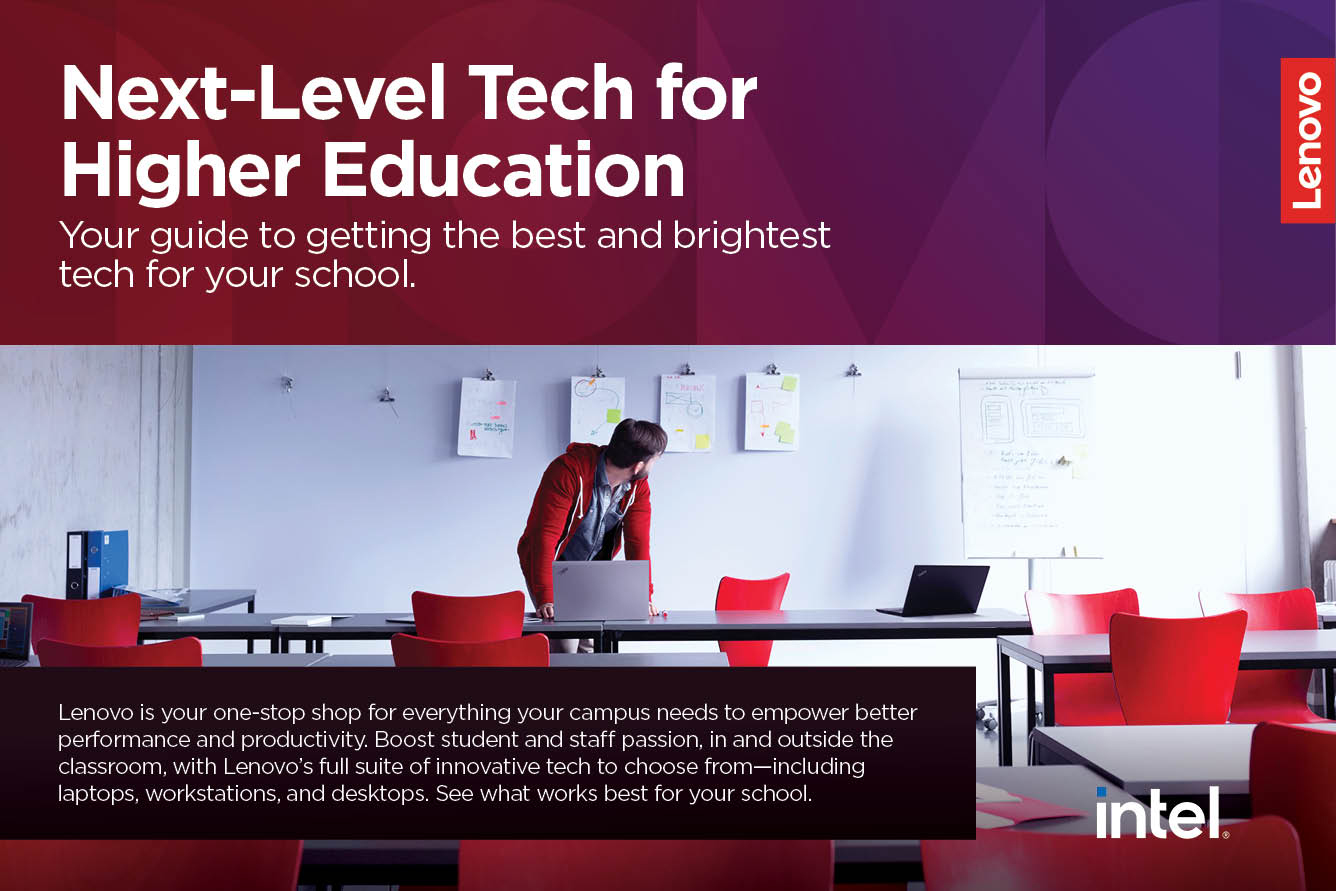Today’s professors remain convinced that artificial intelligence (AI) is set to streamline their training protocols, and replace higher education’s centuries-old, one-size-fits-all model currently in use. According to a study by Cognizant, AI-based applications will equip professors with real-time feedback on student performance, strengths, and weaknesses—providing the key data they need to optimize their approach.

And, thanks to the rapid maturation of new tech resources, the higher education (higher ed) landscape is evolving at an accelerated pace. With these digital tools, many colleges and universities are launching their own off-campus learning programs, hoping to reach their increasingly tech-savvy student body.
To learn more, we asked a number of industry thought leaders and experts about the role of high-tech resources such as 5G, augmented reality (AR), virtual reality (VR) and smart tech in serving and enhancing distance learning programs.
Digital Innovation Fuels Distance Learning Programs
Today’s tech resources are impacting the nation’s college and university systems. Let’s take a look at how virtual breakthroughs are shaping the way present-day higher education is done.
1. AI is rewriting the distance learning rulebook
Artificial intelligence has liberated university lecturers from repetitive, time-intensive tasks, allowing them to concentrate on their higher-value work. Thanks to AI-enabled resources, such as automated assignment grading and remote monitoring services, professors are freed to focus on student retention and tailoring lesson plans to better accommodate off-campus pupils.
For students that don’t thrive in a traditional classroom, AI-powered learning management systems (LMS) tailor educational materials to fit each pupil’s preferred style. These LMS platforms enable students to access more digestible learning materials, rather than long-form lectures and reading assignments.
And, as higher ed learning management systems grow in both scope and capacity, the number of non-American, foreign college students will likely increase, as well.
Fortunately, advancements in text translation and machine learning algorithms will come in handy, especially for international students who experience a lot of challenges due to language barriers. These deep-learning systems help translate English lectures into a student’s native tongue. Similarly, voice recognition and text summarization tech will help to transcribe lectures and reduce paragraphs of text into relevant bullet points for review, easing the note taking process.
According to Kathy Gamboa, a high-performance thought leader, “flexibility is a key consideration with distance learning. [As] technology increases access, connection speed, and innovation, students will place a greater value on [higher ed] institutions. Flexibility translates to convenience for the learner and when AI can respond to the individual pace and progress of learning, students can take control of their path and connect to additional resources as needed.”
2. The use of augmented reality and virtual reality in distance learning
Augmented Reality (AR) and Virtual Reality (VR) have gained widespread acceptance in today’s lecture halls. Over 70% of 16-to-24 year olds in the United States own a smartphone, making AR and VR the next breakthrough innovations in higher education. Industry experts agree that modern distance learning methods could be revolutionized through AR and VR in the years to come.
Augmented and virtual reality programs are leveraging today’s high-speed wireless networks and data streaming technologies. However, with current bandwidth and latency limitations, higher ed institutions must strive to achieve high fidelity telepresence and collaborative virtual and augmented reality applications. Researchers and engineers are designing new 5G networks to address these issues and empower the next generation of virtual interfaces.
Ultimately, AR and VR will provide rich, detailed content, seamless video streaming, live courses, and telepresence professors—facilitating higher ed’s transition from in-person, physical classrooms to a more virtual-based education.
3. Distance learning and the 5G technology marketplace
For learning to take root, higher ed institutions need high-speed wireless networks that can reach students where they live and supply them with a harmonious learning experience.
Enter fifth generation (5G) technology.
5G’s data speed is almost 1000% faster than 4G, prompting industry experts to believe this promising, new technology will empower academic institutions to transform their higher ed service offerings.
Brent Nair, Chief Operating Officer at Cook Systems, Inc., asserts that “5G promises faster network speeds, which will allow for more bandwidth, faster uploads, and data downloads. This improvement in network infrastructure may allow for the use of technologies such as augmented and virtual reality and smart technology.”
In fact, this evolving 5G technology is triggering a far-reaching deployment of Internet-of-Things (IoT) systems, thanks to its massive connectivity, wide coverage, low latency, and high throughput.
5G will ensure off-campus students receive uninterrupted access to their virtual educational materials, live courses, and telepresent professors. The 5G revolution will even help connect skilled instructors to learners living in rural areas.
Interestingly, 5G networks are currently being built via open-source software and standards, where operators and vendors then integrate the new technologies. The open-source software allows these operators to decide on new business models, deliver new services, and derive new value from their network’s architecture.
Open source LMS’s relevant to higher education eLearning systems include: Moodle, Chamilo, Open edX, Totara Learn, Canvas, Forma, Effectus, ILIAS, OpenOLAT, Opigno, LRN, ATutor, Edu-Sharing, LatitudeLearning, Nera, NexusComply Solution, OLAT, Opentute, Percolate and Sakai.
Reimagining Higher Education
Today’s tech is poised to transform tomorrow’s higher ed services. Modern digital innovations have advanced the academic world’s distance teaching capabilities. By employing engaging and interactive off-campus teaching methods, colleges and universities can look to extend class offerings and improve enrollment numbers.

However, as experts note, efforts must be made to ensure appropriate application of the new tech. Thought leaders like Kathy Gamboa agree. “Privacy concerns and data breaches happen too often and, with the amount of information that students put online, academic institutions need to put some measures in place. In 2018, 144 universities had their data breached to the cost of $3.4 billion in intellectual property.”
“Educause has some great research around the topic and it shows the hiring of CISOs (Chief Information Security Officer) is on the rise. And, in places where this role is present, fewer incidents occur.”
Because today’s students were raised as digital natives, the introduction of these new tech resources are tailor-made to match their higher ed journeys. And, with the right measures, it’s only a matter of time before distance learning becomes the new normal for colleges and universities nation-wide.






